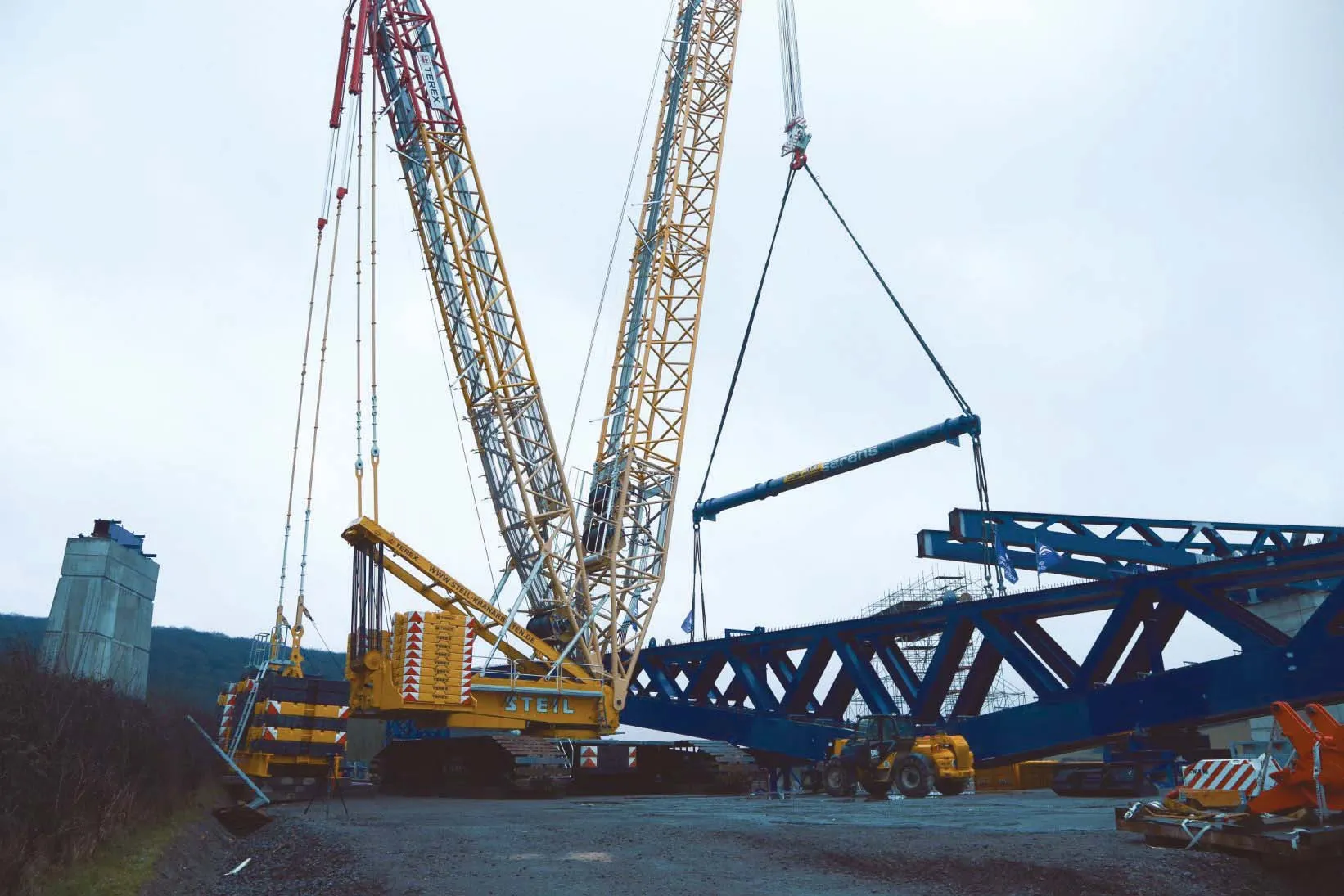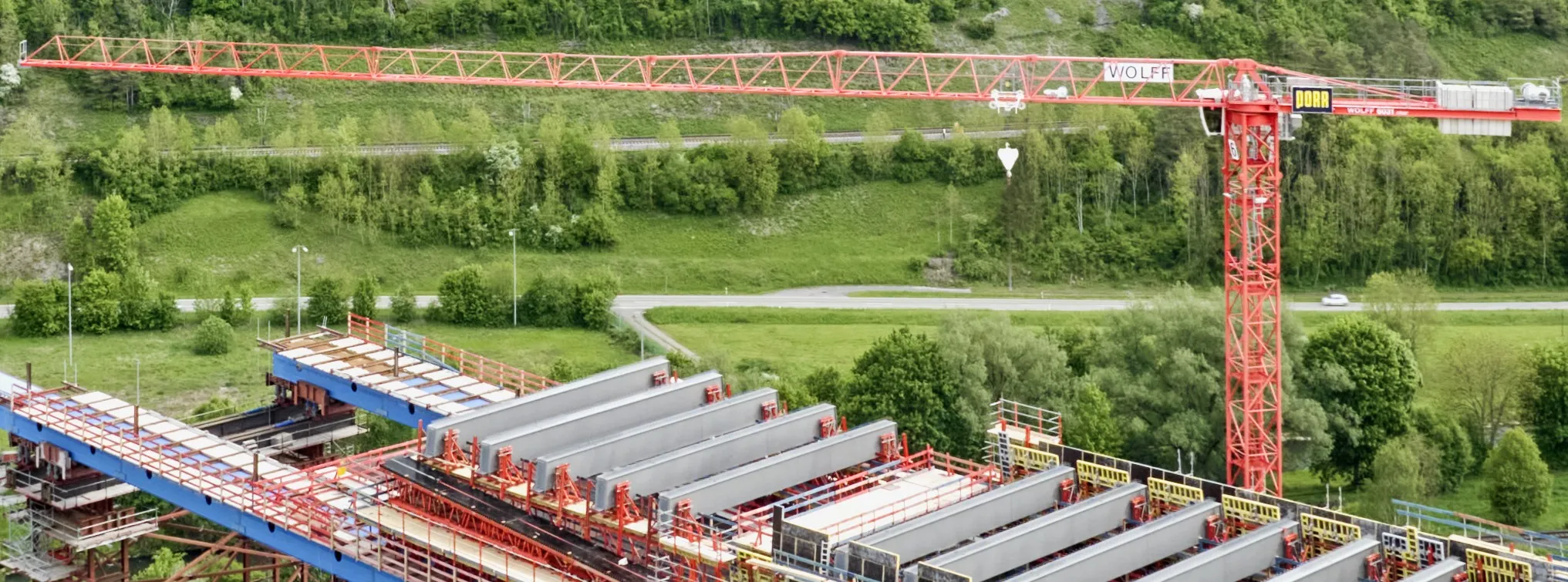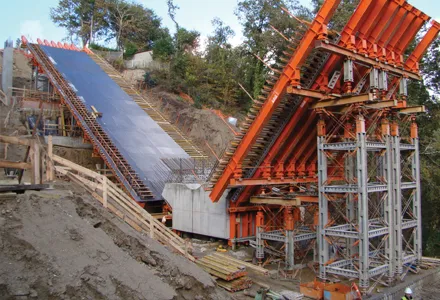The versatility and mobility of a Terex crawler crane has helped enormously with the construction of a new road bridge in Luxemburg.
The 1222 Terex Superlift 3800 lattice boom crawler crane owned by Trier-based Steil Kranarbeiten was used to build a bridge in Luxemburg only two days after the same machine was used on a job in the Hunsrück mountain range. The machine was needed to lift a 440m long bridge across a valley, connecting a new section of highway. To do this, the machine had to lift 14 steel girders and set them down on concrete piers. The components forming part of the bridge were substantial items measuring 96m long, 7m high and, together with the required load-securing devices, weighing in at 295tonnes each. To lift the 14 loads, Steil’s team erected the Superlift 3800 crawler crane with a 72m main boom, 250tonnes of counterweight on the superstructure, 50tonnes of central ballast, and 200tonnes of counterweight on the superlift tray. To provide stability when lifting a load of such dimensions, Steil’s rigging team configured the vario hookblock with dual hooks and a spreader.
The contractor used two hoisting wire ropes and 10-part reeving, which meant that, at 18tonnes/reeving, it needed a maximum lifting force of 360tonnes. To place the girders in their supporting pylons, the operator first lifted them to a height of 22m, swiveled them to the side, and then moved the crane forward about 50m in the direction of the bridge piers. To provide sufficient ground stability, the crawling path was rigged with steel plates. Once the operator advanced the full 5m, the load was then swivelled back in and set it down on the corresponding bridge pier at a working radius of 23.5m.










